MCAST COVID-19
Information Page
The health and safety of our community is our top priority. We know that many people are understandably concerned about the current pandemic situation. MCAST is taking increased health and safety measures to address these concerns while ensuring that learning can continue. As the situation continues to develop, please stay updated by visiting mcast.edu.mt/covid19 for the latest information. You can also visit the circulars section for all the official messages sent to staff and students.
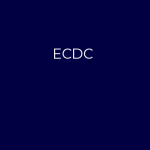
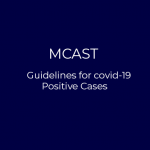


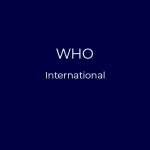
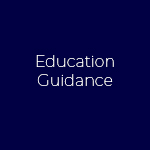
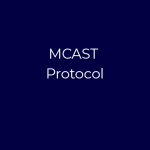
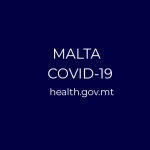

- The European Respiratory Virus Surveillance Summary (ERVISS)by ECDC on July 11, 2025 at 12:09 pm
This interactive dashboard provides a weekly integrated epidemiological summary for influenza, RSV and SARS-CoV-2.
- Communicable disease threats report, 28 June - 4 July 2025, week 27by ECDC on July 4, 2025 at 4:10 pm
This issue of the ECDC Communicable Disease Threats Report (CDTR) covers the period 28 June - 4 July 2025 and includes updates on influenza A(H5N1), Middle Eastern Respiratory Syndrome (MERS), SARS-CoV-2, updates on respiratory virus epidemiology in the EU/EEA, poliomyelitis, Crimean-Congo haemorrhagic fever, West Nile virus infection, and chikungunya.
- Reporting protocol for zoonotic influenza virusby ECDC on June 30, 2025 at 7:06 am
This reporting protocol describes data collection for human cases of zoonotic influenza viruses, with the aim to support assessment of key indicators and trends over time and inform situational risk assessments.
- The potential bias introduced into COVID-19 vaccine effectiveness studies at primary care level due to the availability of SARS-CoV-2 tests in the general populationby ECDC on June 26, 2025 at 7:41 am
- COVID-19 vaccination coverage in the EU/EEA during the 2024–25 season campaignsby ECDC on June 13, 2025 at 3:46 pm
This report presents a description of COVID-19 vaccine coverage in the European Union/European Economic Area (EU/EEA) between 1 August 2024 and 28 March 2025.
News (English) - World Health Organization Corporate news releases, statements, and notes for media issued by the World Health Organization.
- Senegal joins growing list of countries that have eliminated trachomaon July 14, 2025 at 3:30 pm
WHO has validated Senegal as having eliminated trachoma as a public health problem. Senegal becomes the ninth country in WHO’s African Region to have achieved this feat.
- Global childhood vaccination coverage holds steady, yet over 14 million infants remain unvaccinated – WHO, UNICEFon July 14, 2025 at 12:54 pm
In 2024, 89% of infants globally received at least one dose of the diphtheria, tetanus and pertussis (DTP)-containing vaccine, and 85% completed all three doses, according to new data released today by WHO and UNICEF. Despite the progress, the latest estimates highlight a concerning trajectory.
- WHO recommends injectable lenacapavir for HIV preventionon July 14, 2025 at 8:24 am
The World Health Organization (WHO) released today new guidelines recommending the use of injectable lenacapavir (LEN) twice a year as an additional pre-exposure prophylaxis (PrEP) option for HIV prevention, in a landmark policy action that could help reshape the global HIV response. The guidelines are being issued at the 13th International AIDS Society Conference (IAS 2025) on HIV Science, in Kigali, Rwanda.
- Joint statement by OCHA, UNDP, UNFPA, UNOPS, UNRWA, WFP and WHO on fuel shortage in Gazaon July 12, 2025 at 2:26 pm
The United Nations warns that the fuel shortage in Gaza has reached critical levels. Fuel is the backbone of survival in Gaza. It powers hospitals, water systems, sanitation networks, ambulances, and every aspect of humanitarian operations. Fuel supplies are needed to move the fleet used for transporting essential goods across the Strip and to operate a network of bakeries producing fresh bread for the affected population. Without fuel, these lifelines will vanish for 2.1 million people. After almost two years of war, people in Gaza are facing extreme hardships, including widespread food insecurity. When fuel runs out, it places an unbearable new burden on a population teetering on the edge of starvation. Without adequate fuel, UN agencies responding to this crisis will likely be forced to stop their operations entirely, directly impacting all essential services in Gaza. This means no health services, no clean water, and no capacity to deliver aid. Without adequate fuel, Gaza faces a collapse of humanitarian efforts. Hospitals are already going dark, maternity, neonatal and intensive care units are failing, and ambulances can no longer move. Roads and transport will remain blocked, trapping those in need. Telecommunications will shut down, crippling lifesaving coordination and cutting families off from critical information, and from one another. Without fuel, bakeries and community kitchens cannot operate. Water production and sanitation systems will shut down, leaving families without safe drinking water, while solid waste and sewage pile up in the streets. These conditions expose families to deadly disease outbreaks and push Gaza’s most vulnerable even closer to death. For the first time in 130 days, a small amount of fuel entered Gaza this week. This is a welcome development, but it is a small fraction of what is needed each day to keep daily life and critical aid operations running. The United Nations agencies and humanitarian partners cannot overstate the urgency of this moment: fuel must be allowed into Gaza in sufficient quantities and consistently to sustain life-saving operations.
- World leaders recognized for championing the WHO Pandemic Agreementon July 11, 2025 at 4:38 pm
The World Health Organization has formally recognized the pivotal role of a number of heads of state and government in securing the adoption of the WHO Pandemic Agreement by the Seventy-eighth World Health Assembly in May 2025. At a special event at WHO Headquarters in Geneva on 10 July 2025, plaques were presented to the representatives of two countries whose former and current presidents, His Excellency Sebastián Piñera, former President of Chile, and His Excellency Kais Saied, President of Tunisia, advocated for the Agreement from the outset. Certificates were also awarded to leaders of 25 other countries for their guidance and commitment throughout the negotiation process.“The adoption by the World Health Assembly of the Pandemic Agreement was a historic moment in global health,” said Dr Tedros Adhanom Ghebreyesus, WHO Director-General. “But we would not have reached that moment without sustained political advocacy from the highest levels”. Countries whose current or former presidents or prime ministers were also recognized include Albania, Costa Rica, Croatia, Fiji, France, Germany, Greece, Indonesia, Italy, Kenya, Republic of Korea, Netherlands, Norway, Portugal, Romania, Rwanda, Senegal, Serbia, South Africa, Spain, Thailand, Trinidad and Tobago, Ukraine, and the United Kingdom of Great Britain and Northern Ireland. The Pandemic Agreement represents a global commitment to a more robust international health architecture, one that is grounded in equity, cooperation, and shared responsibility.Political momentum behind the Agreement was galvanized in part by a commentary published in major international outlets in 2021, in which 25 heads of state and international organizations called for a pandemic treaty. Work has now begun to take forward key elements of the Pandemic Agreement, in particular on pathogen access and benefit sharing. This work is being led by an intergovernmental working group (the “IGWG on the WHO Pandemic Agreement”), which met for the first time this week.

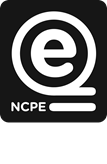





 MCAST Main Campus
MCAST Main Campus  +356 2398 7100
+356 2398 7100
 information@mcast.edu.mt
information@mcast.edu.mt